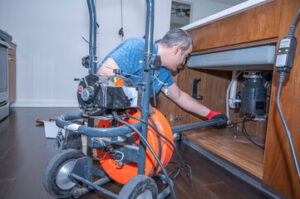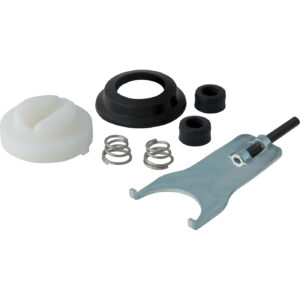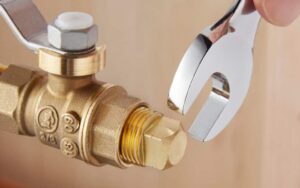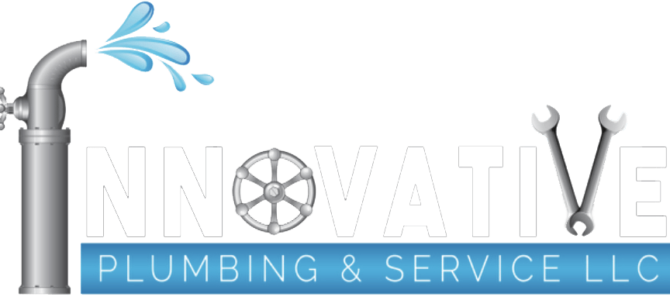If you hear gurgling sounds or smell foul odors around your home, it could be a sign of a clogged drain or sewer line. Avoid commercial drain cleaners with toxic chemicals that are bad for your pipes and your health.

Instead, try baking soda and vinegar, which are safe for your plumbing system. This tried-and-true mixture is inexpensive and easy to use. For professional help, call Philadelphia Drain Cleaning now!
Hair is one of the most common causes of clogged drains. It doesn’t just sit in the shower or bathtub, either; it can travel down the pipes and block multiple drains, including those of your toilet. Fortunately, there are a few easy steps you can take to prevent and combat hair-related clogs.
First, try brushing your hair before showering or bathing to minimize loose strands that may fall into the drain. Also, consider putting a mesh screen or strainer over your drain to catch any stray strands and prevent them from going down the drain. These inexpensive and effective gadgets can be easily installed in your bathtub, sink, or shower, and are simple to clean.
Another home based solution to fighting a hair-related clog is to mix a combination of boiling water, salt, and baking soda. Pour six cups of hot water, a cup of salt, and a cup of baking soda down the drain, then wait for it to fizz and dissolve. This can help dislodge most clogs caused by hair.
You can also try using needle nose pliers to grab the hair clumps that are stuck in your drain, but make sure you wear gloves so you don’t get any of that icky hair on your hands. If you don’t have needle-nose pliers, try using the end of a wire hanger to fish out any hair clumps that are hard to reach. Finally, try flushing the pipe with a liter of hot water after using any of these methods to clear out the debris.
If none of these natural solutions work, you can always purchase a chemical drain cleaner that is safe for your pipes and specifically formulated to break down organic materials like hair, mildew, and food particles. Just be sure to read the directions on the product and follow them closely, as many chemical drain cleaners can be toxic if used incorrectly. You can also try an enzyme-based drain cleaner, which uses bacteria to break down organic clogs without the harsh chemicals of caustic drain cleaners. These can be purchased at most hardware stores.
Clogs Caused by Grease
Grease, fats and oils clog drains when they solidify inside pipes. This can cause sinks to overflow, leaving standing water and causing foul odors. Often, it’s the result of a lack of proper disposal of cooking grease by pouring it down the kitchen drain. But it can also be caused by a number of other items you put into your drain system, including meat scraps, coffee grinds, egg shells, rice, and many soaps and detergents.
If you have a sink drain that seems to be accumulating grease, you may need to use a homemade cleaner to break up the clog and remove it. You can try pouring a pot of boiling water down the drain, or a mixture of baking soda and vinegar. The heat of the water will help melt the grease and slide it away. You can also use a commercial chemical-based drain cleaner for severe grease clogs.
When you’re done, make sure to flush the drain with a few cups of boiling water to clear out any remaining grease or food waste. Taking these steps will help you prevent future drain clogs caused by grease.
To keep your drains in top shape, you can perform an at-home drain cleaning once or twice a month to remove hair, food waste, and other debris that could lead to a blockage. This will not only ensure that your drains work properly, but it can also help you avoid costly repairs down the road. If your drain is clogged by something that doesn’t respond to an at-home remedy, or you notice frequent clogs in the same area of your home, contact a plumbing professional for drain cleaning in McAdenville. They can provide thorough drain cleaning to help you keep your kitchen, bathroom, and other drains running smoothly. They can even offer tips for keeping your drains clean and free of clogs in the future. This will save you money, time, and stress. You can also call them if you need any other help with your plumbing system. They can help you with all of your plumbing needs, whether it’s installing a new fixture or fixing a broken pipe.
Clogs Caused by Food
Whether it’s a slow shower drain, temperamental bathtub or a kitchen sink that’s giving you trouble, food scraps and grease can be the culprit. Even if you’re careful to rinse dishes and wipe down your counters and stovetops, leftover cooking oil, fats and grease can linger in drain pipes, coating the inside lining and eventually forming a hard-to-remove clog.
Food scraps also clog sink drains because they quickly settle in the pipe. They cling to each other, as well as to any remaining bits of food in the drain, and they collect more and more food as time passes. The result is a smelly, sticky mass that’s almost impossible to break up without the help of a professional.
You can prevent food scraps from building up in your kitchen sink by keeping a trash can nearby to toss any stray leftovers. You should also avoid putting large chunks of food into your garbage disposal, as they jam the blades and can cause the unit to overheat. Similarly, if you use a clogged dishwasher, you should empty the appliance completely and wash the drain line with a plumbing snake before using it again.
Another common cause of kitchen drain clogs is coffee grounds, eggshells and pasta. Even a well-maintained garbage disposal can’t handle these types of foods, which can clog the disposal or the sink drain. These foods also expand when they mix with water, creating a thick paste that restricts or blocks water flow.
Anyone with kids knows that toys and other objects tend to fall down toilets, showers and bathtub drains, where they can get stuck at the u-bends of the pipes. While a little kid’s toy is probably too small to get stuck in the drain, it’s not uncommon for teens and adults to forget that things like stray hairs and dirty socks don’t belong in the toilet.
If you have a drain that’s been acting up and you suspect it’s due to food, try pouring about a cup of baking soda down the drain. Let it sit for about a half hour or overnight. Then, pour a pot of boiling water down the drain to flush it.
Clogs Caused by Sewage
If you have a drain that doesn’t seem to be working correctly, it could be a sign of a clog. A blocked drain can create a chain reaction that prevents water, waste and even clean laundry from making its way through your plumbing system. When this happens, it can cause all sorts of problems including backups and water damage. If you’re experiencing these issues, it’s important to call a professional plumber for drain cleaning.
Some clogs are easier to fix than others. If you have a small, localized blockage, you may be able to clear it with a household product like baking soda or vinegar. However, more serious clogs will require more professional tools and techniques. If your drain is completely blocked, you will likely need to use a professional drain snake or auger. This tool consists of a long, thin metal coil that you push or pull through your pipes. If you have a lot of experience using this type of equipment, you can try to dislodge or hook the clog yourself before calling a plumber.
Another common cause of clogs is when materials that don’t belong in the pipe make their way into it. If you flush too much toilet paper or dispose of food scraps improperly, they can build up and block a drain or sewer line.
Clogs can also be caused by cracked or broken pipes that allow debris to enter the pipe. This can include leaves, dirt, or gravel that finds its way into your plumbing system. Tree roots also often grow into cracks in your sewer lines, leading to a clog.
Getting to know the most common types of drain clogs can help you avoid them. You should also learn how to recognize the signs of a clog, so you can get it repaired as quickly as possible. If you notice that a drain smells bad or there’s standing water, it’s time to call for a professional drain cleaner in Havertown, PA. With this service, you can ensure that all of your drains work as they should and keep your plumbing system in good condition.


